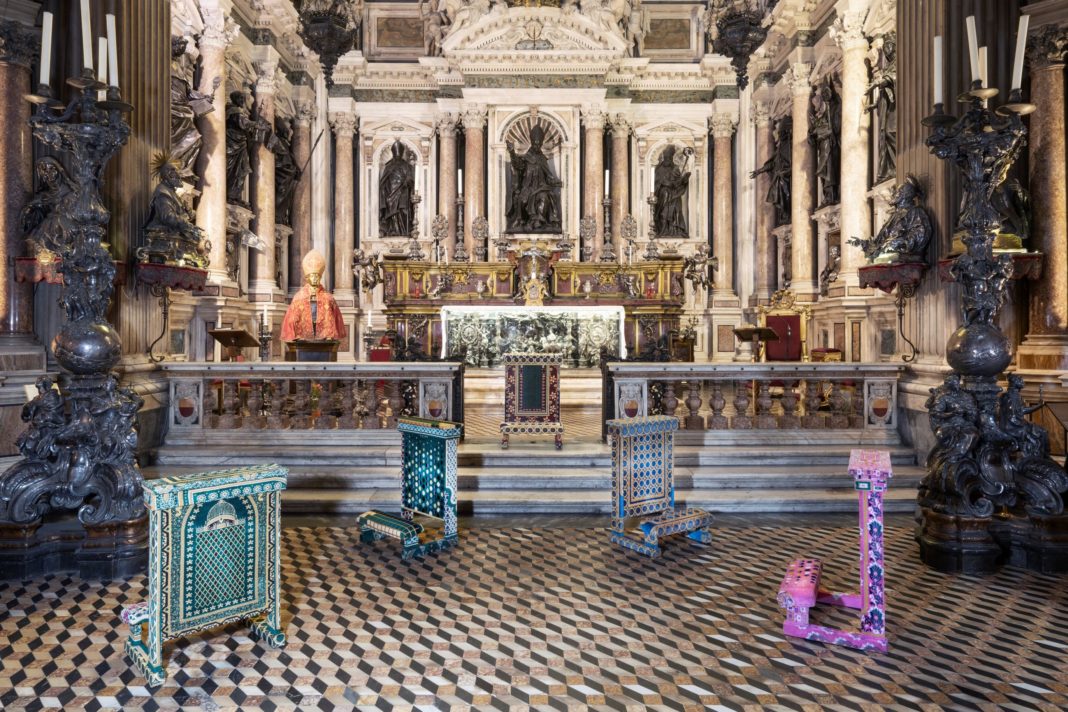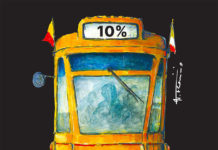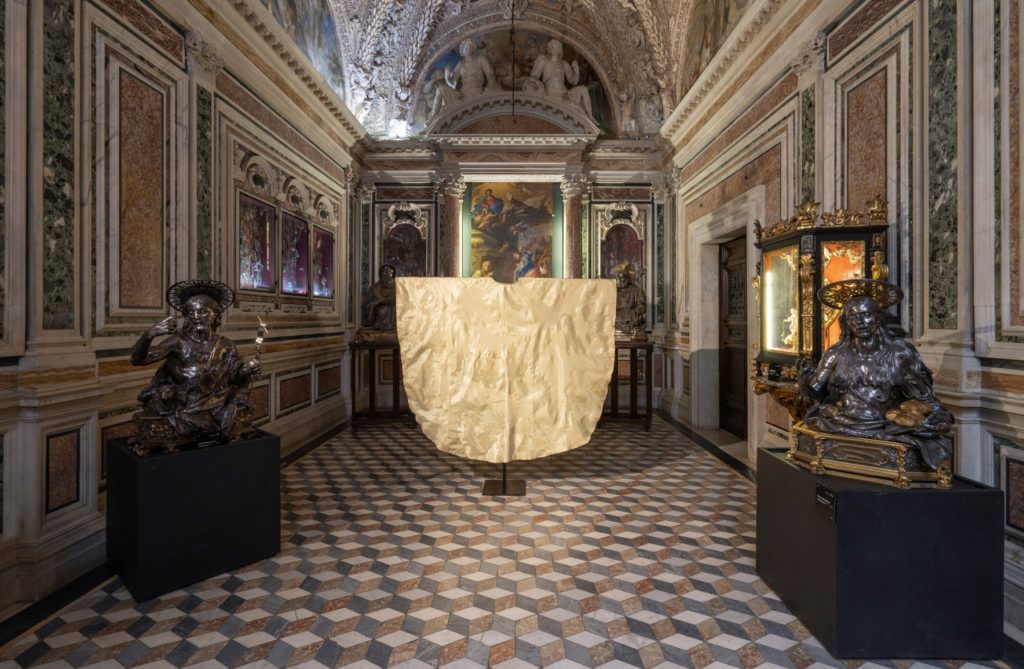
Una meraviglia tra le meraviglie. La mostra proposta da Giulia Piscitelli al museo del tesoro di San Gennaro, una delle mete più frequentate dai turisti nelle feste di Natale appena trascorse.
L’intento era quello di far armonizzare le opere custodite nella dimora del santo (doni preziosi offerti al patrono di Napoli nel corso del tempo) con quelle firmate da un’artista contemporanea, esposte con il titolo “Una nuvola come tappeto” ispirato a un testo di Erri De Luca (che traduce dall’ebraico il versetto 39 del Salmo 105 «dove si canta Dio che guida gli Ebrei nel deserto») inserito nel piccolo catalogo dalla forma di un quaderno d’appunti, una specie di vademecum tra i segreti dell’esposizione (con scritti di Stefano Chiodi, Vincenzo De Gregorio, Francesca Ummarino, corredato delle immagini di Amedeo Benestante che immortalano i lavori di Piscitelli).
E l’obiettivo è stato colto appieno tanto che alcune persone del numeroso pubblico che ha affollato le sale e la cappella ha pensato che i 21 inginocchiatoi di legno realizzati con tappeti facessero parte della struttura museale. Belli, raffinati, spirituali nella loro coloratissima essenzialità. Un successo che ha spinto gli organizzatori a rinviare la data di chiusura della mostra (prevista per il 25 gennaio) al 16 marzo.
Ma non sono le uniche gemme d’arte dei giorni nostri ad aver fatto irruzione in maniera così elegante nei luoghi di una devozione che raccoglie fedeli da tutto il mondo soprattutto nelle tre date cruciali della prodigiosa liquefazione: la prima domenica di maggio, il 19 settembre e il 16 dicembre.
Vi troviamo anche un piccolo e luccicante naso dorato, riproduzione di quello della stessa artista, una specie di ex voto in omaggio a San Gennaro, la planeta (sacerdotale) in tessuto kevlar in colore giallo oro, ricavato da un giubbotto antiproiettile realizzata dalla cucitura di oltre cento pezzi e singolari mappe punteggiate di aureole (in foglia oro, come quelle che si trovano in antichi ritratti sacri): l’artista le definisce «campi ecologici (eco-field) dell’animo» capaci di creare connessioni tra terra e cielo, reale e divino.
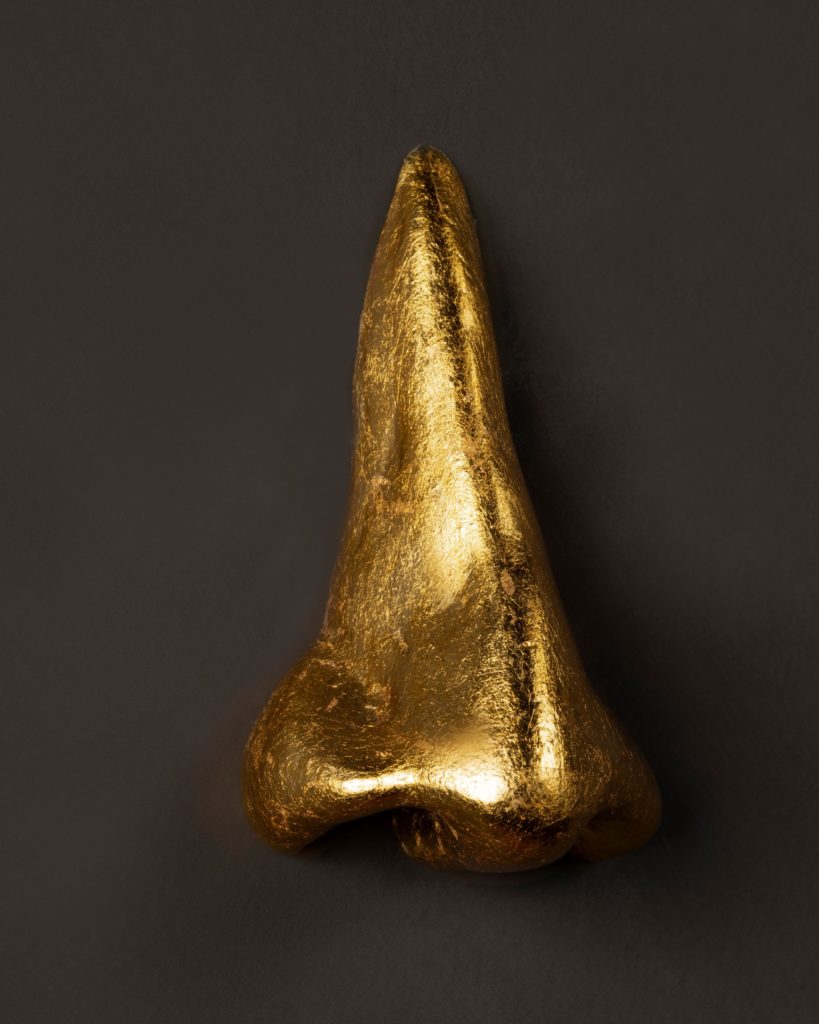
E a proposito del naso, segnaliamo un aneddoto leggendario: si narra che il busto marmoreo di San Gennaro, custodito nel convento dei Cappuccini di Pozzuoli, fosse deturpato dai corsari saraceni che, con un colpo di scimitarra, ne tagliarono il naso. I fedeli ordinarono a vari scultori un nuovo naso ma nessuno di quelli proposti riuscì ad attaccarsi al viso mutilo. Intanto, numerosi pescatori si trovarono più volte nelle reti un pezzo di marmo dalla forma strana che, scambiato per un semplice sasso veniva rigettato in mare. Fu uno di loro a riconoscere in quella pietra la forma di un naso e la portò in chiesa dove volò dalle sue mani per tornare al proprio posto.
Però, tra verità e leggenda, quello che la mostra riesce a costruire è soprattutto un silenzioso incantesimo religioso universale dove il passato dialoga con il presente, sussurrando indicibili emozioni.
Per saperne di più
Read more at
https://tesorosangennaro.it/
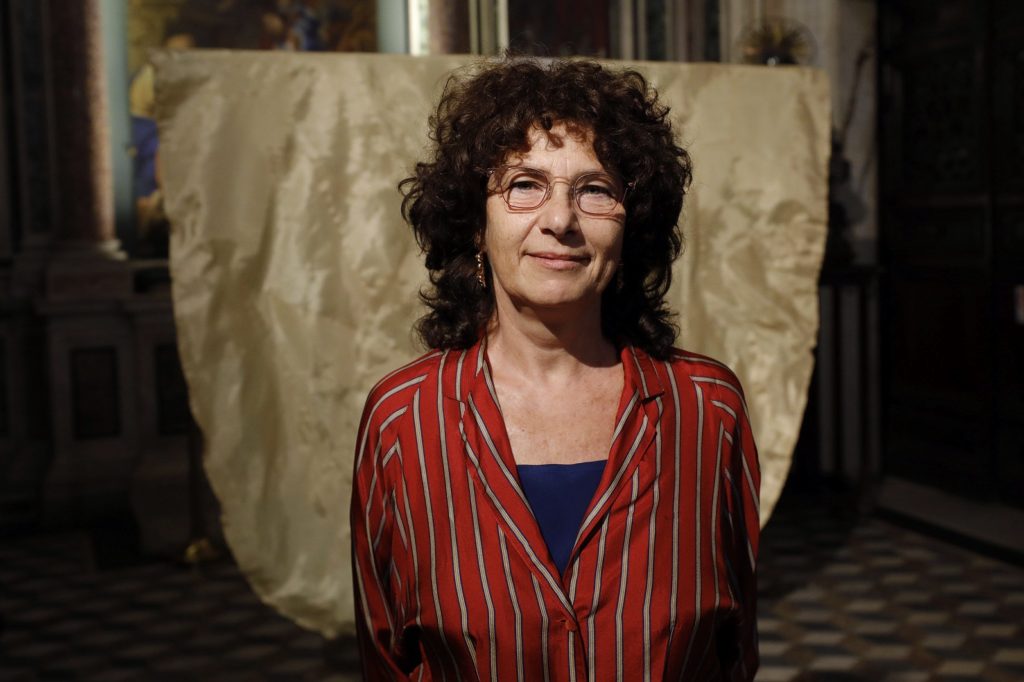
Museum and Chapel of the Treasure of San Gennaro/ When the cloud is a coloured carpet: an exhibition by Gina Piscitelli creates a silent dialogue between the ancient and the contemporary
A wonder among wonders. It’s the exhibition proposed by Giulia Piscitelli until the 25th of January at the Museum of the Treasureof San Gennaro, one of the most popular tourist destinations during the recent Christmas holidays.
The aim was to bring together works from the saint’s home (gifts given to the patron saint over the centuries) with works signed by the contemporary artist, exhibited under the title “A Cloud Like a Carpet”, inspired by a text by Erri De Luca (who translates the Hebrew verse 39 of Psalm 105, “where God is sung who guides the Hebrews in the desert”), which is included in the small notebook-style catalogue, a kind of vademecum among the secrets of the exhibition (with texts by Stefano Chiodi, Vincenzo De Gregorio, Francesca Ummarino, accompanied by Amedeo Benestante’s images immortalising Piscitelli’s works).
And the goal was fully achieved, so much that some of the large audience that filled the rooms and the chapel thought that the 21 wooden kneelers made of carpets were part of the museum structure. Beautiful, sophisticated, spiritual in their colourful essence.
But they are not the only jewels of modern art that have so elegantly infiltrated the places of a devotion that gathers the faithful from all over the world, especially on the three decisive dates of the miraculous liquefaction: the first Sunday in May, the 19th of September and the 16th of December.
We also find a small, glittering golden nose, a reproduction of the artist’s own, a kind of ex voto in homage to San Gennaro, the golden yellow planeta (priest’s) in Kevlar fabric, made from a bulletproof vest sewn together from more than a hundred pieces, and unique geographical maps with halos (in gold leaf, like those found in ancient sacred portraits): the artist calls them “ecological fields of the soul”, capable of creating links between earth and sky, the real and the divine.
And on the subject of the nose, here is a legendary anecdote: it is said that the marble bust of Saint Gennaro, kept in the Capuchin monastery of Pozzuoli, was disfigured by Saracen pirates who cut off his nose with a blow from their scimitar. The congregation commissioned several sculptors to create a new nose, but none of them succeeded in reattaching it to the mutilated face. Meanwhile, on several occasions, fishermen found a strangely shaped piece of marble in their nets, which they mistook for a simple stone and threw back into the sea. One of them recognised the shape of a nose in the stone and took it to church, where it flew from his hands back to its rightful place.
Between truth and legend, however, what the exhibition manages to construct is above all a silent, universal religious magic, where the past is in dialogue with the present, whispering unspeakable emotions.


